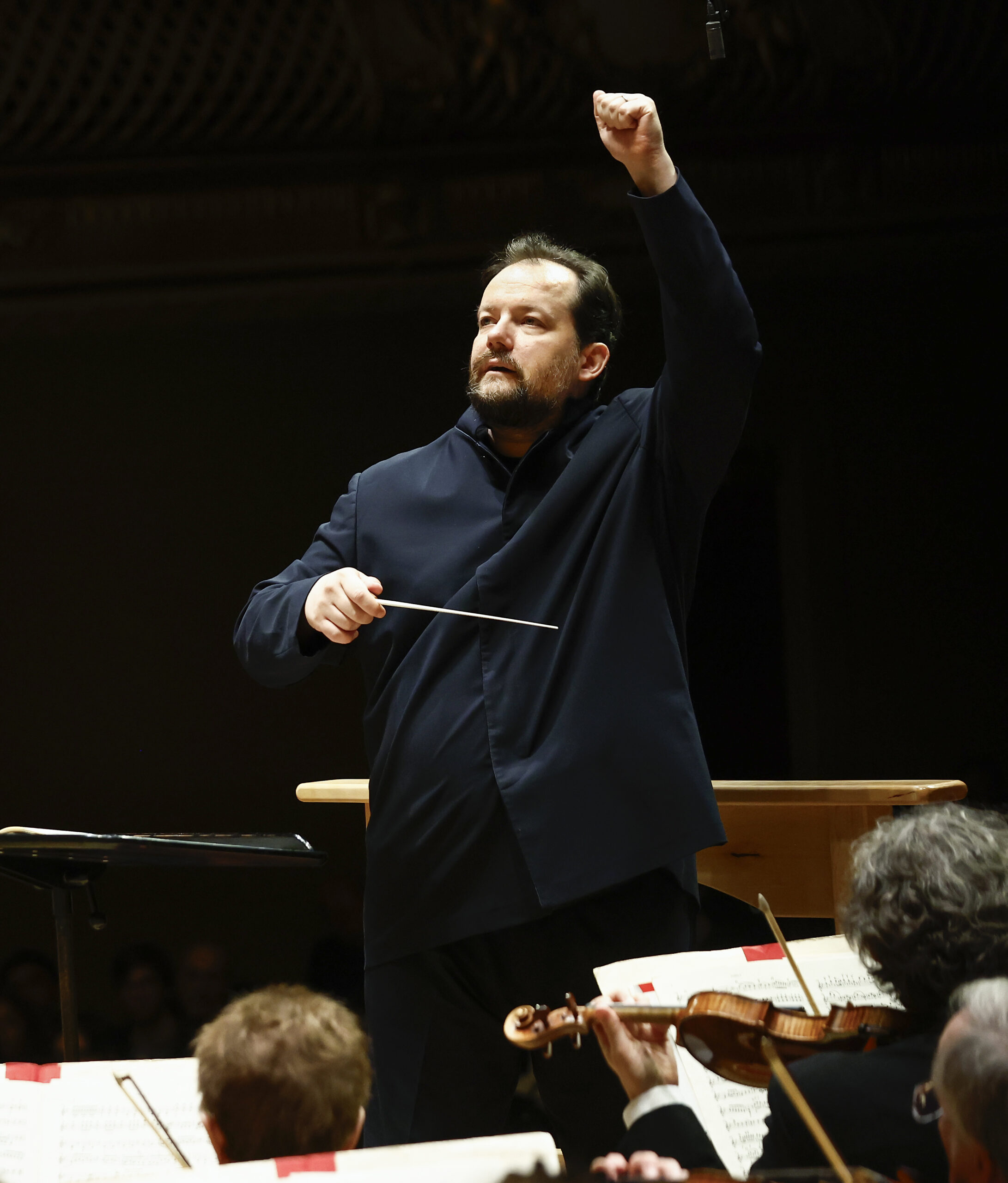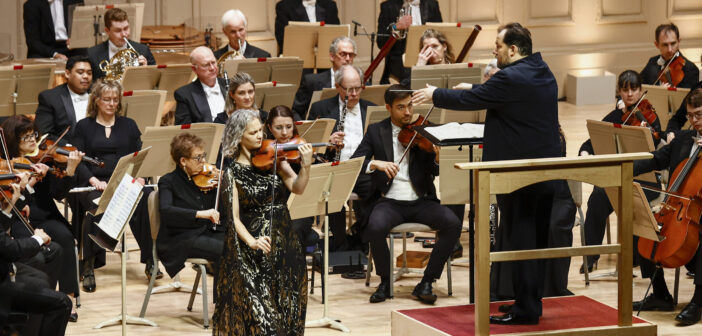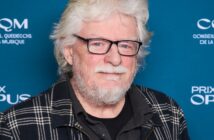It was not the weather that brought thousands to Boston Symphony Hall for an open rehearsal, a pre-concert chat, a matinee, and multiple evening performances. Rather, it may well have been the premiere of the opening work on the program, ANCHORA, by contemporary classical composer Anna Thorvaldsdottir, or possibly, the upbeat elegance of Mozart’s Symphony No. 33 in B-flat, K. 319, a worthy prescription for heavy hearts.
This repertoire, brought to life by the glorious Boston Symphony Orchestra under the direction of Andris Nelsons, and guest violinist Hilary Hahn, whose performance Johannes Brahms’ Violin Concerto in D, Opus 77, made for an evening well worth the transit.
Maestro Nelson himself conveyed humility – and perhaps surprise – at the near sold-out attendance, when he addressed the open rehearsal on Thursday morning. He explained to the filled hall that although it was an open rehearsal, he could feel the energy of a performance given the size of the audience. He suggested that the three works on the program would serve to communicate a range of musical ideas. His few words inspired the audience to reflect on music as a common language of the heart. A similar sense of wonderment was expressed by Boston Conservatory Professor Elizabeth Seitz when she delivered the Friday matinee pre-concert preview.
When the curtain rose, there was more – intensity, enthusiasm, creativity, and a sound that magically filled Symphony Hall.
The first work on the program, ANCHORA, was completed in 2022 as a commission for the BBC Proms. This was the piece’s first performance by the Boston Symphony Orchestra. It is a beautiful work, roughly 20 minutes in duration.

Boston Symphony Orchestra at Symphony Hall, Thursday, April 18, 2024, in Boston. (Photo by Winslow Townson)
Andris Nelsons, conductor
Hilary Hahn, violin
The scoring is inspired by the natural landscape of Iceland, and makes use of winds, brass, strings, and percussion, including gong, tam-tam, large bass drum and strings, layers fulsome orchestral sound and contrasting this texture with chamber music-like instrumental groupings. The low pedal strings and brass mark the opening, eliciting sombre contemplation. Shimmering eerie sounds signal foreboding, transfixing listeners. The work is memorable for the low pitches which pronounce the commencement of the work, and the juxtaposition of passages reminiscent of Medieval chant, folk and liturgical music. The piece ends with silence. The conductor and performers (and their bows) remained frozen on stage in silence for what felt like minutes.
Mozart’s Symphony No. 33 in B-flat. K. 319 was up next. In contrast with ANCHORA, its first 24 measures sparkled with elegance. Musical phrases were shaped meticulously under the skilled baton of Maestro Nelsons. In the second movement, the oboe’s lyricism punctuated the texture of strings and winds beautifully. The counterpoint that followed led to an ending marked by unison.
The second half of the program featured the Brahms’ Violin Concerto. Guest artist Hilary Hahn strode onto the stage in regal attire, her face beaming with an expression that asserted her musical presence. Her understated dedication is well known to the thousands of YouTube followers who have risen to her #100daysofpractice. Her trademark style couples presence with charm, and her technique couples perfect tuning with technical prowess. These qualities were in evidence throughout all three of the piece’s movements. She smiled and connected with the conductor, the orchestra members, and the audience, a gesture which showed her heart to listeners.
Hahn is a powerhouse on and off stage. Beyond her performance career, she is the co-founder of deepmusic.ai, a start-up that treats AI as an enabler rather than a foe. In performance, the violin and appended bow seem like a physical extension of her regal gown, as she projects a sonic palette of pain and comfort. Every phrase is deliberately and carefully shaped, the resulting emotional intensity so extraordinary that tears visibly flowed during the performance.
Hahn will be performing in Toronto, Thursday June 6, at Koerner Hall.















